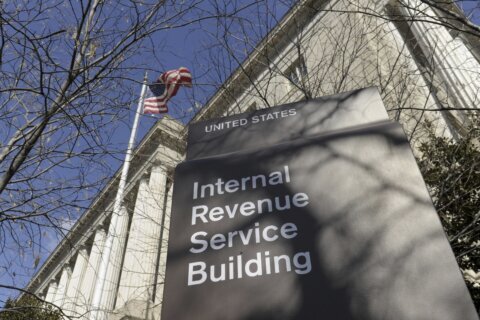This article is part of WTOP’s monthlong series, “Money Matters,” where we explore tips for saving, budgeting and making your money work for you. Check for new articles all month, right here on WTOP.com.
With the cost of college front-and-center for so many parents, families are looking for ways to save so their children have money set aside.
One of the most popular tools for that is the 529 plan, a tax-advantaged investment account designed for education savings.
Kaitlyn Large, a mother in Montgomery County, Maryland, uses that method to save for her two daughters, who are 8 and 6 years old.
“I opened a 529 for each girl shortly after they were born, as soon as they had a Social Security number,” Large said. “I’ve consulted with my financial adviser, and given the amount that we’re putting in each year and with the inflation rate, I think they’re set up to graduate debt-free.”
The 529 plans offer certain advantages when used for qualified education expenses such as in-state college, graduate school and apprenticeship programs.
“They have significant tax and financial aid advantages,” said Mark Kantrowitz, an author and nationally recognized expert on student financial aid, scholarships and student loans. “The money, like in a Roth IRA, accrues interest on a tax-deferred basis, and it is entirely tax free if you use it to pay for qualified higher education expenses.”
When choosing a plan, investors have several options.
Kantrowitz recommended a “dynamic” investment strategy that begins with greater exposure to stocks for growth potential, then gradually shifts toward other investments, such as bonds.
“When the child is young, you have a higher percentage of investment stocks because if there is a downturn, you have many years to recover from those losses,” Kantrowitz said.
To find a plan, he suggested families simply search online for the name of their state along with “529 plan” to explore available options. They can also find answers to many questions at savingforcollege.com.
Kantrowitz also encouraged families to begin contributing to a 529 plan as early as possible.
“Time is your greatest asset,” he said. “Every dollar you save is a dollar less you’re going to have to borrow.”
“I think it really sets you up for success. With the economy, with inflation, I don’t know what university is going to be like in 10 years from now,” Large added. “I really would like to avoid taking out loans.”
Kantrowitz suggested setting up automatic contributions from a bank account.
“I typically recommend that you save $250 a month per child, but some people just can’t afford that, so you save what you can, and you make it automatic, you’ll quickly get used to not having the money in your bank account,” Kantrowitz said.
For Large, automatic payments are key. The money is simply withdrawn from her account each month.
“I budget for it, it comes out … and that gives us a nice tax break at the end of the year,” Large said. “I did a fair amount of research and went with that approach.”
Families can adjust their contributions over time based on financial flexibility, and Kantrowitz’s advice is to “save as much as you can, as frequently as you can.”
“It pays to do some research, and then once you’ve done the research, you can set it up and forget it,” Kantrowitz said.
Get breaking news and daily headlines delivered to your email inbox by signing up here.
© 2025 WTOP. All Rights Reserved. This website is not intended for users located within the European Economic Area.





